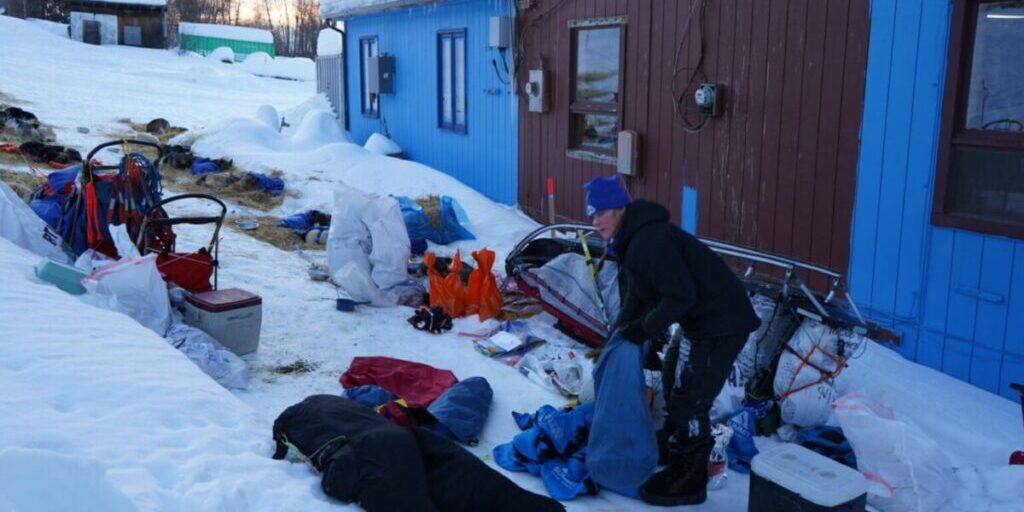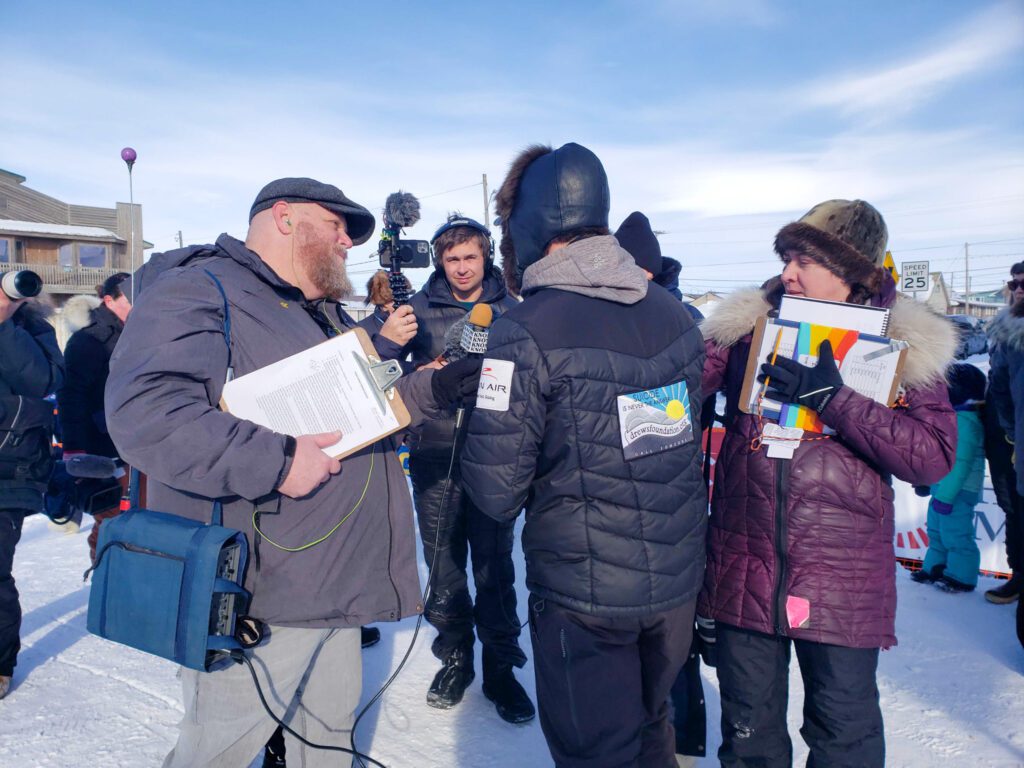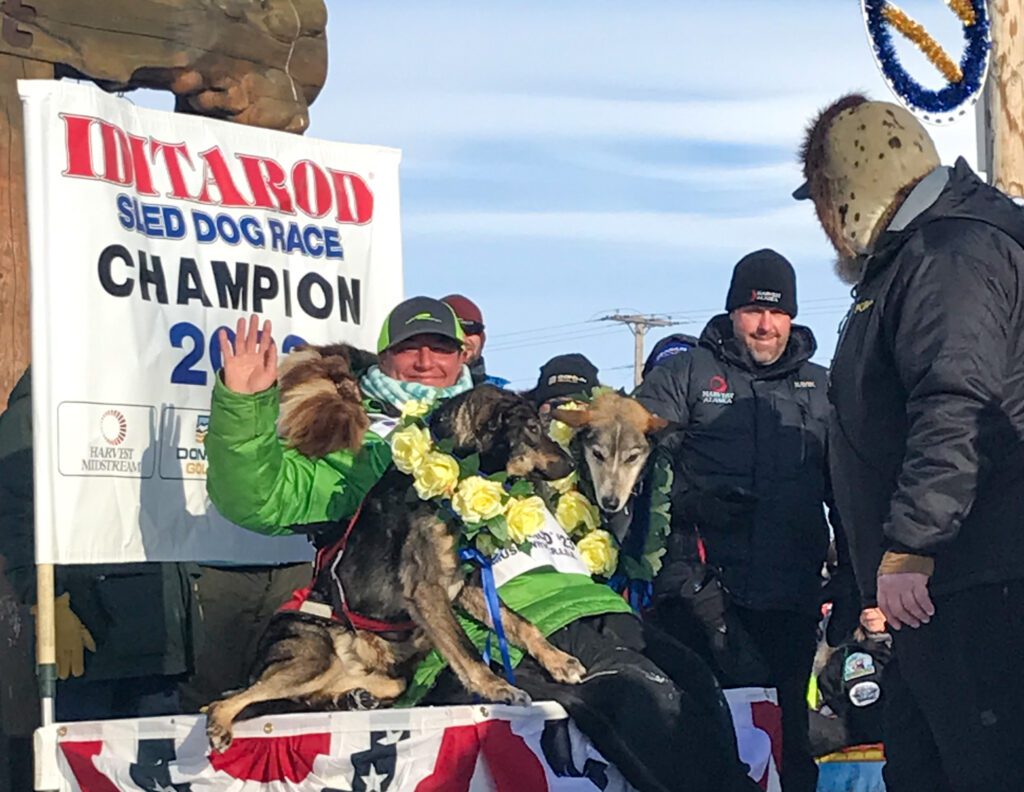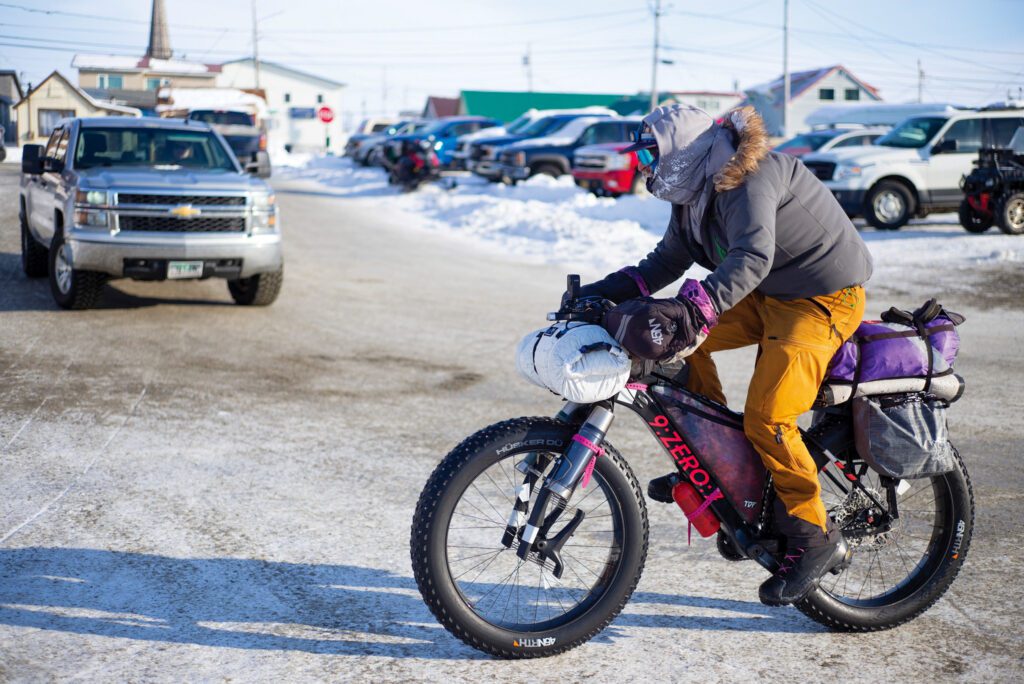This article by Lex Treinen was originally published by Alaska Public Media. It was republished with permission through a partnership with KNOM.
In the dogyard outside of the Takotna Checkpoint, musher Bridgett Watkins is getting rid of some ice that’s frozen into her sled runners. Her tool of choice: the back of a hand axe.
“You see down here, there’s ice and that’s all weight,” she said, pointing to holes filled with ice in the bottom of her sled runners. “It’s just extra weight you’re trying to get out that you don’t have to have.”
Her sled is turned upside down to drain the water from rain the day before.
But Watkins said — overall — she’s had a pretty smooth race so far, especially compared with her rookie run last year, when she was forced to drop out due to bad weather shortly before the Nome finish line.
Now, in Takotna, she’s made it about a third of the way into this race. She was one of the last mushers to leave the checkpoint after finishing her 24-hour mandatory rest. She slept a lot — 16 of the 24 hours, she estimates.
“I make it my priority,” she said. “I didn’t sit and chitchat or dilly-dally. I just took care of dogs, went back to sleep. Ate, went right back to sleep.”
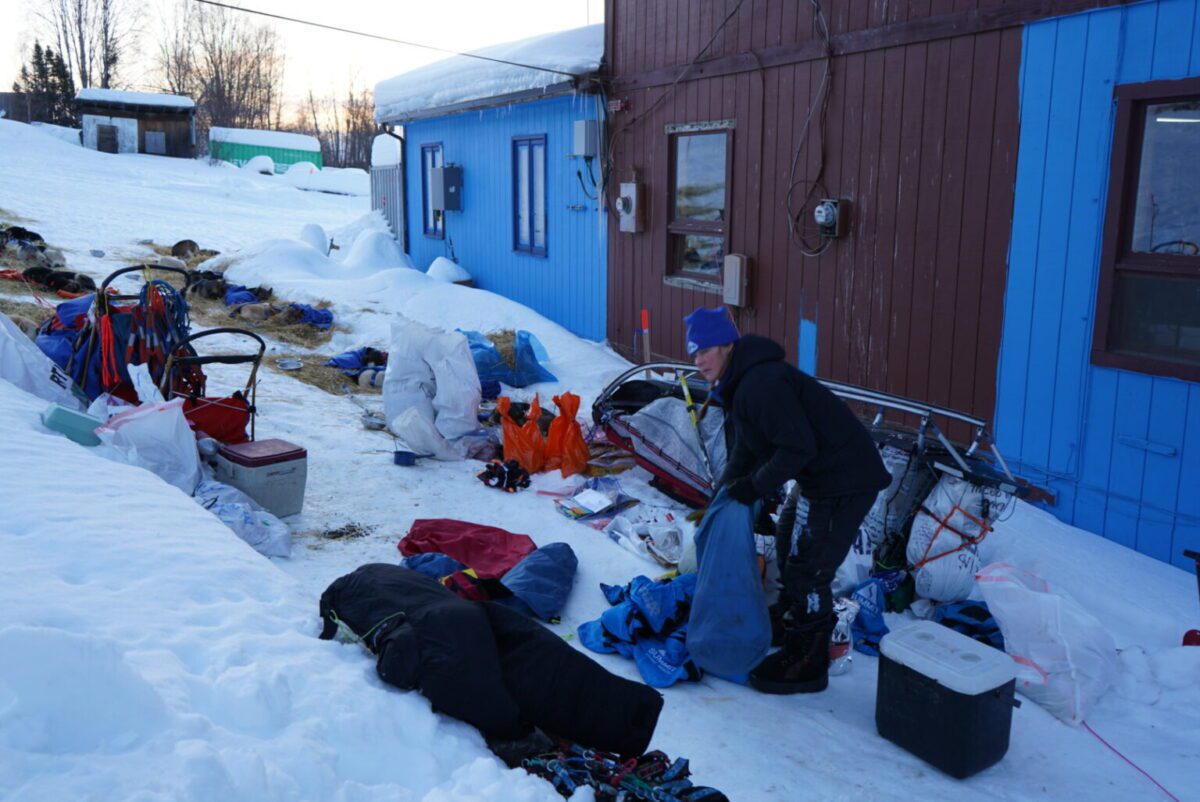
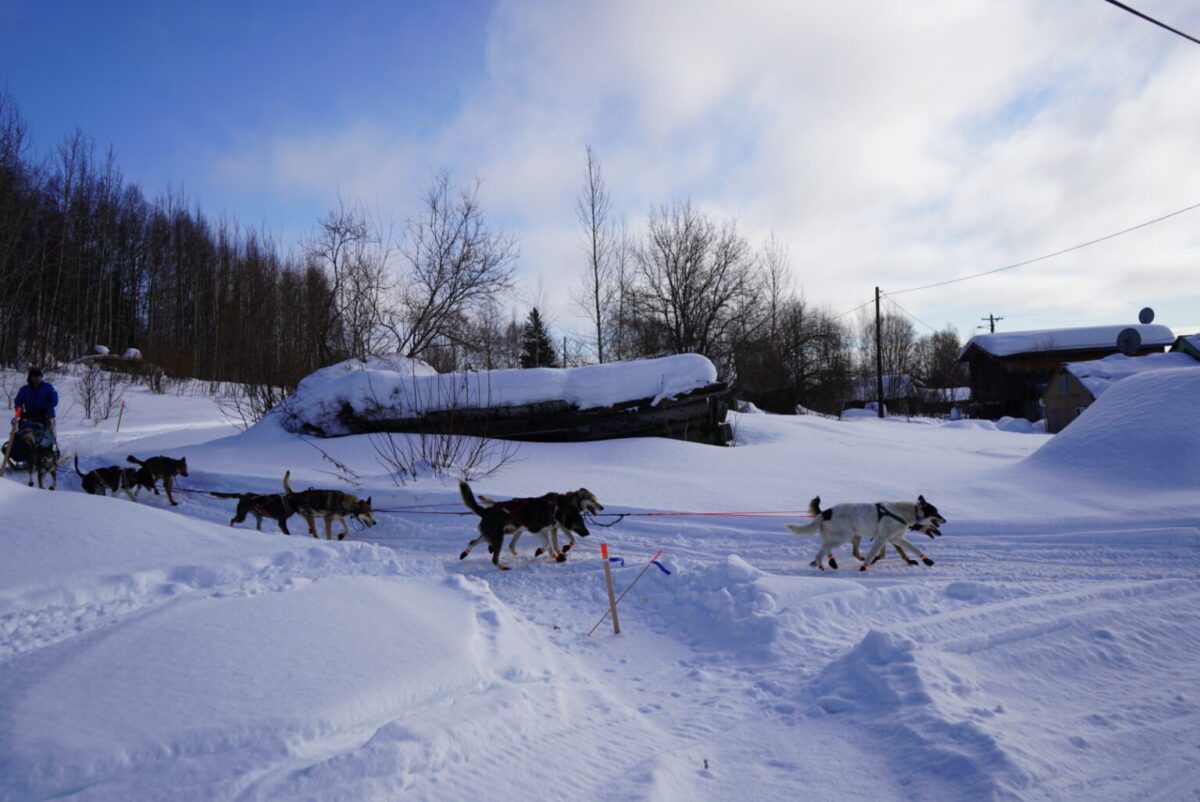
Sleep was high on the minds of many mushers during their 24-hour rests. Takotna, with a population of about 50 people, is an ideal place for mushers to get some quiet, though some complained of snoring in the bunkhouse. But Christian Turner had a hack he learned from his 5-month-old daughter.
“I put on my baby girl’s ‘shhhhhh app’ in my ears and it’s just like ‘shhhh’ and puts me to sleep,” said the Australian.
Ramey Smyth said a recent cold that clogged his ears meant he didn’t have to worry too much about being awakened by other mushers snoring. Plus, he said, musher John Baker, who he said was a loud snorer, isn’t in the field this year.
He said he was unsure at first about where to take his 24-hour stop, but decided that Takotna was the right place for him.
“The vibe is really nice here, the people are nice, you just can’t beat Takotna,” he said.
Inside the checkpoint — a bustling two-story wood community center on the riverbank — there’s plenty for mushers to satiate their hunger, too. The community is known for its abundant and delicious pies, which the school and other residents donate to feed the mushers.
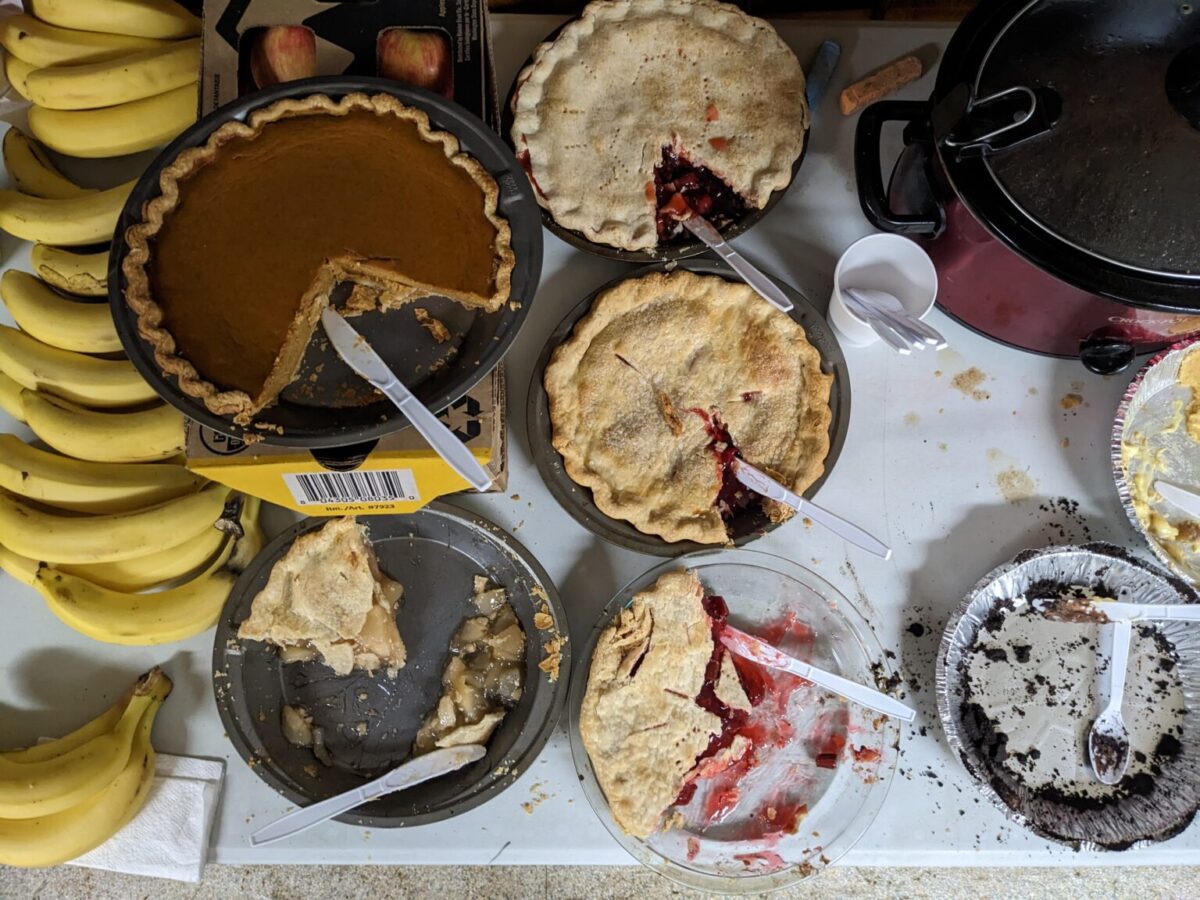
This is the first time Takotna is a checkpoint in a couple years due to COVID-19. Tabatha Meglitsch, a 37-year resident and local checkpoint manager, said it’s exciting.
“It feels really good to be back,” she said.
Still, she said there are community members who are concerned. Meglitsch said some high-risk people in the community are avoiding the crowds. The tribal council opted out of hosting the Iditarod this year, but voted to allow the race to come through town. Meglitsch has been volunteering with the Iditarod since she was 5 years old, and said she decided to step in.
“The council said, ‘We’re allowing it but we’re not in charge of it,’ and I said, ‘OK, we have two weeks to get food,’” she said.
Based on the tables filled with hamburgers, salmon, cakes and pies, it has all worked out, she said. Musher Eric Kelly, getting ready to leave after his 24-hour rest, agreed. He tested out a variety of pies.
“I had apple pie, banana pie, and one I’m not even sure what it was, it was just good,” he said.
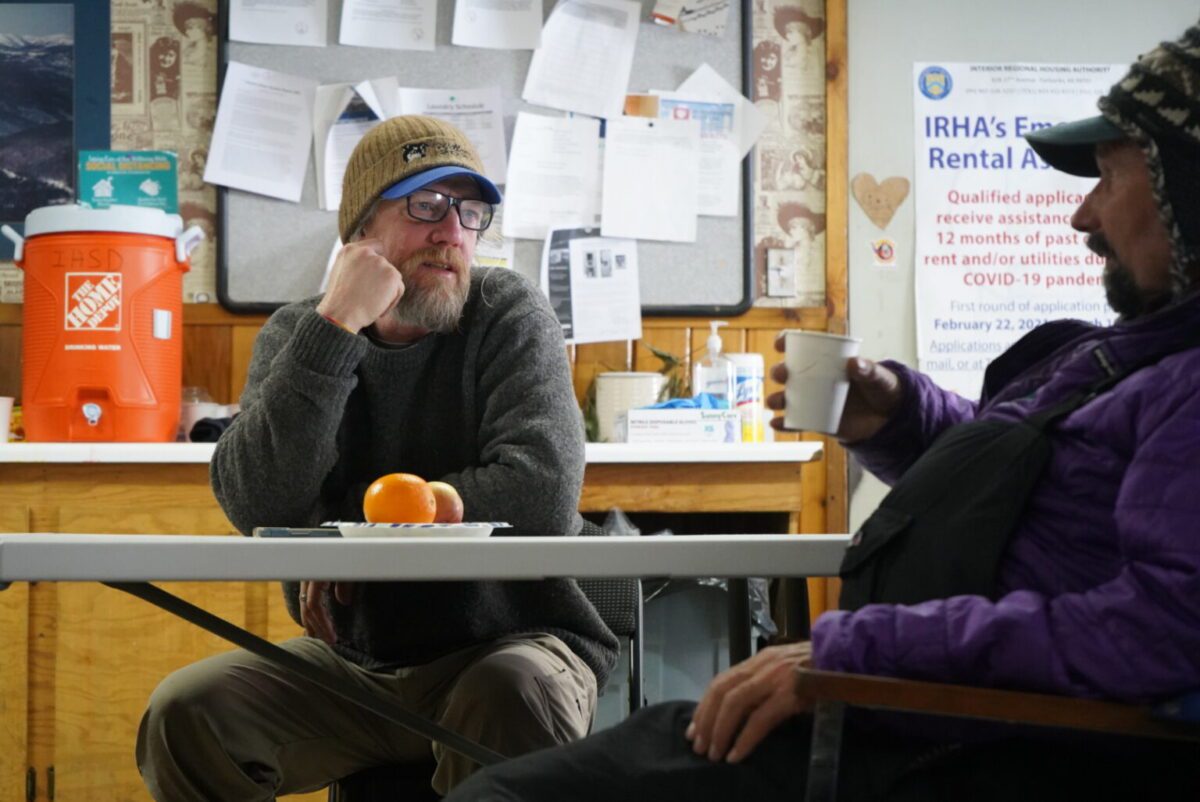
This is Kelly’s second Iditarod, but his first on the slightly longer southern route so it’ll be a new trail for him ahead.
“I’m excited, I’m not even nervous,” he said.
With some hours of rest and pies in his belly, he said, he’s ready for whatever the long stretches of lonely trail throw at him.
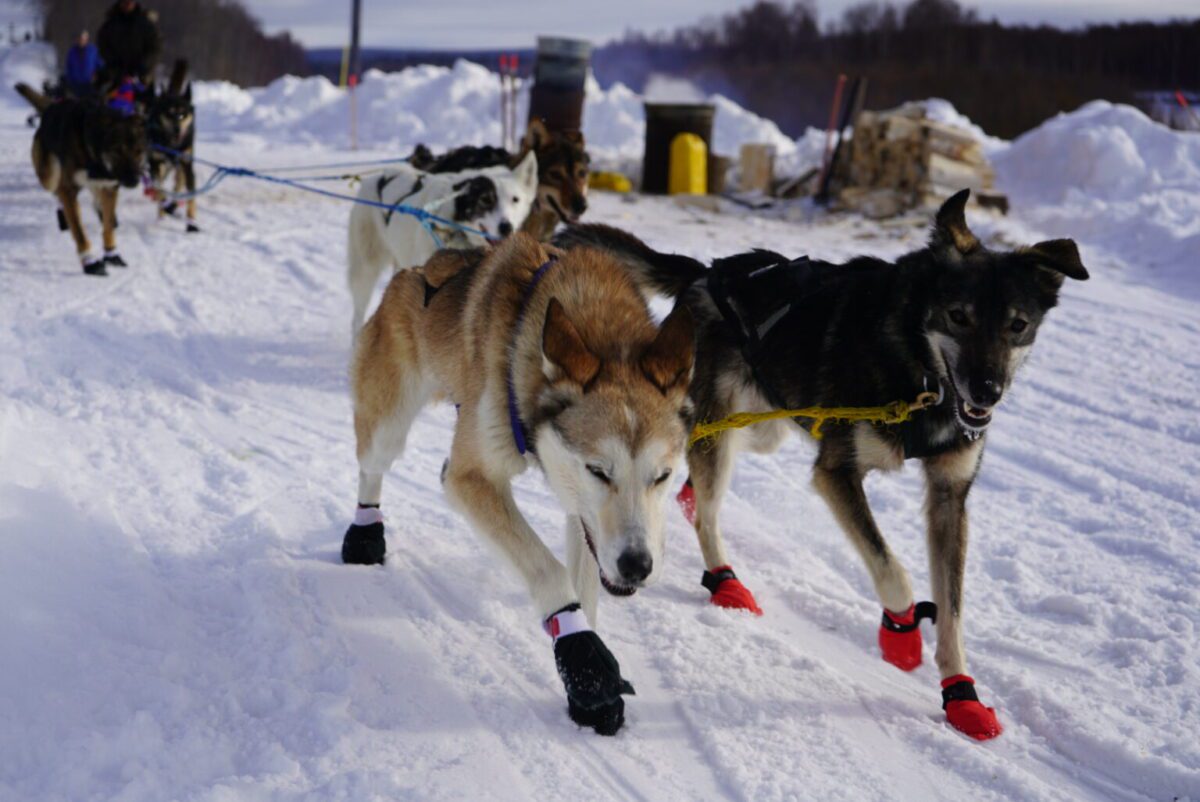
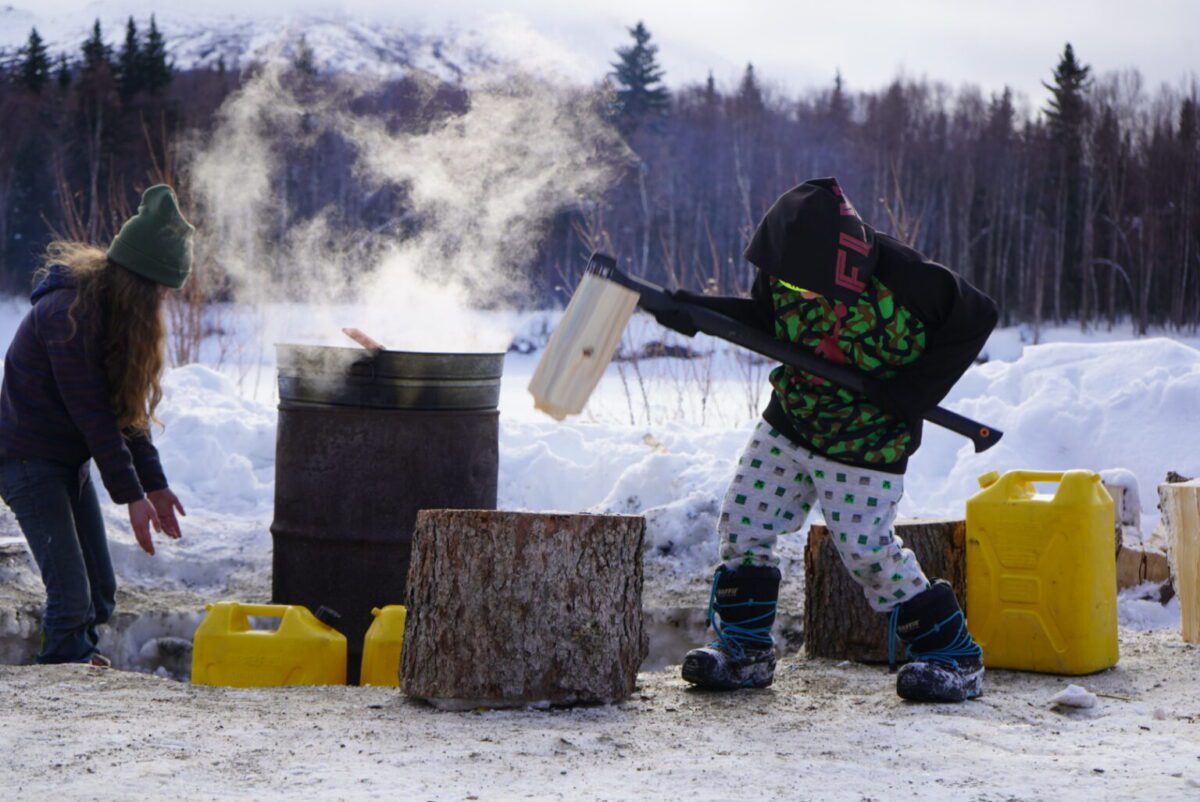
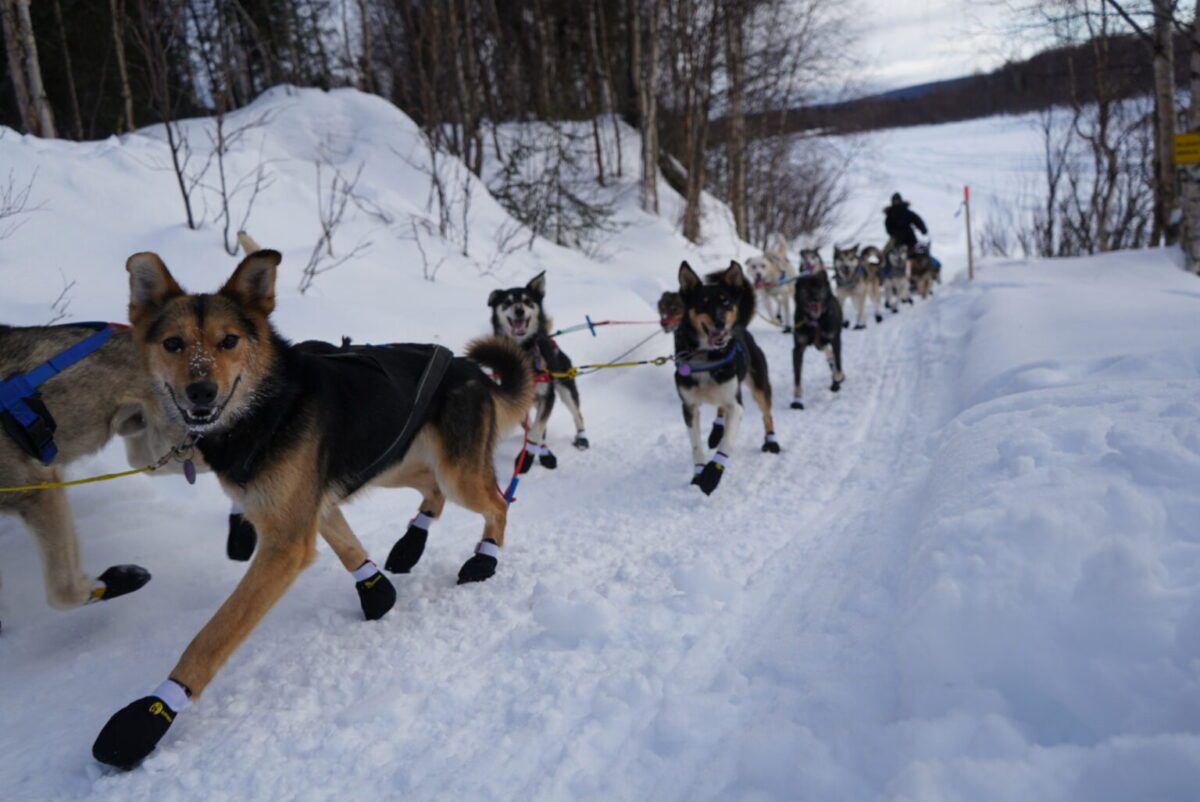
Image at top: Bridgett Watkins relaxes at the Takotna checkpoint on Thursday toward the end of her 24-hour rest. (Lex Treinen/Alaska Public Media)




